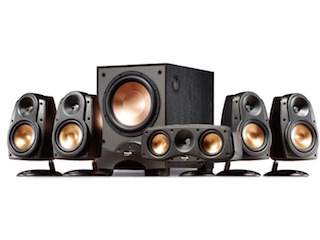 Movie theatres are getting bigger again and exhibitors have learned that audiences are willing to pay for the kind of immersive entertainment that simply can’t be duplicated in the typical home theatre. This trend has only increased the demand that the audio match, or even surpass, the quality of the images on the big screen. Cinema sound has never been bigger or more important. Understanding that, Digital Cinema Report reached out to key manufacturers to learn what developments in sound technology they’ll be highlighting when the exhibition industry gathers next month at CinemaCon 2016 in Las Vegas. In the final part of this ongoing series, I spoke with Dusty Thomas, cinema sales manager, North & South America, Klipsch Group, to get his perspective.
Movie theatres are getting bigger again and exhibitors have learned that audiences are willing to pay for the kind of immersive entertainment that simply can’t be duplicated in the typical home theatre. This trend has only increased the demand that the audio match, or even surpass, the quality of the images on the big screen. Cinema sound has never been bigger or more important. Understanding that, Digital Cinema Report reached out to key manufacturers to learn what developments in sound technology they’ll be highlighting when the exhibition industry gathers next month at CinemaCon 2016 in Las Vegas. In the final part of this ongoing series, I spoke with Dusty Thomas, cinema sales manager, North & South America, Klipsch Group, to get his perspective.
Digital Cinema Report: Briefly describe your company’s line of cinema sound products and services.
Dusty Thomas: Through the use of highly efficient speaker designs, handcrafted cabinetry and a thirst for real engineering breakthroughs – Klipsch, the great American loudspeaker company, was born in Hope, Arizona. Today, our diverse range of quality audio products includes speakers for almost any professional application – including cinema, whole-house, wireless, home theater and portable offerings. We are the Keepers of the Sound. Klipsch Group is headquartered in Indianapolis and is a Voxx International Company.
DCR: What are you highlighting at CinemaCon 2016?
DT: KI-398-RGL – Klipsch’s new line array system was designed so that one speaker sounded good, while multi cabinet designs sounded just as good throughout the whole auditorium. KPT-396 – high output surround to meet and exceed surround output levels as dictated by Atmos and very large auditoriums. MCM-Grandeur – From 35 to 18K… fully horn loaded. Designed for those large deep auditoriums that want high spls for the demands of immersive audio formats. The systems are capable of max continuous spls greater than 135 and peaks over 140.
DCR: In your view, what have been the biggest changes in cinema sound in the past decade?
DT: Digital film, which bore digital uncompressed, full frequency audio. Gave meaning to the phrase digital ready, and we were. The advent of multichannel sound and object-based sound gave the film sound mixers a lot more flexibility in creating soundscapes to match the picture of a digital picture. This prompted much higher performance requirements and technology developments to match
DCR: Do exhibitors in general appreciate the value of sound in movie theatres? Do their patrons?
DT: A great majority of exhibitors believe that sounds drives impact of the film. Patrons will return to quality sounds systems without acknowledgement, but will avoid those experiences that are poor without notification.
DCR: Are cinema sound standards necessary to advance the cause of better quality audio in movie theatres?
DT: Sound standards help to ensure that content is presented in the same spirit in which it was created. Standards should be applied to make sure that the content is valuable to the viewer. As such, sound standards should be developed to guide the exhibitors in sound systems, but not restrictive to create undue strain.
